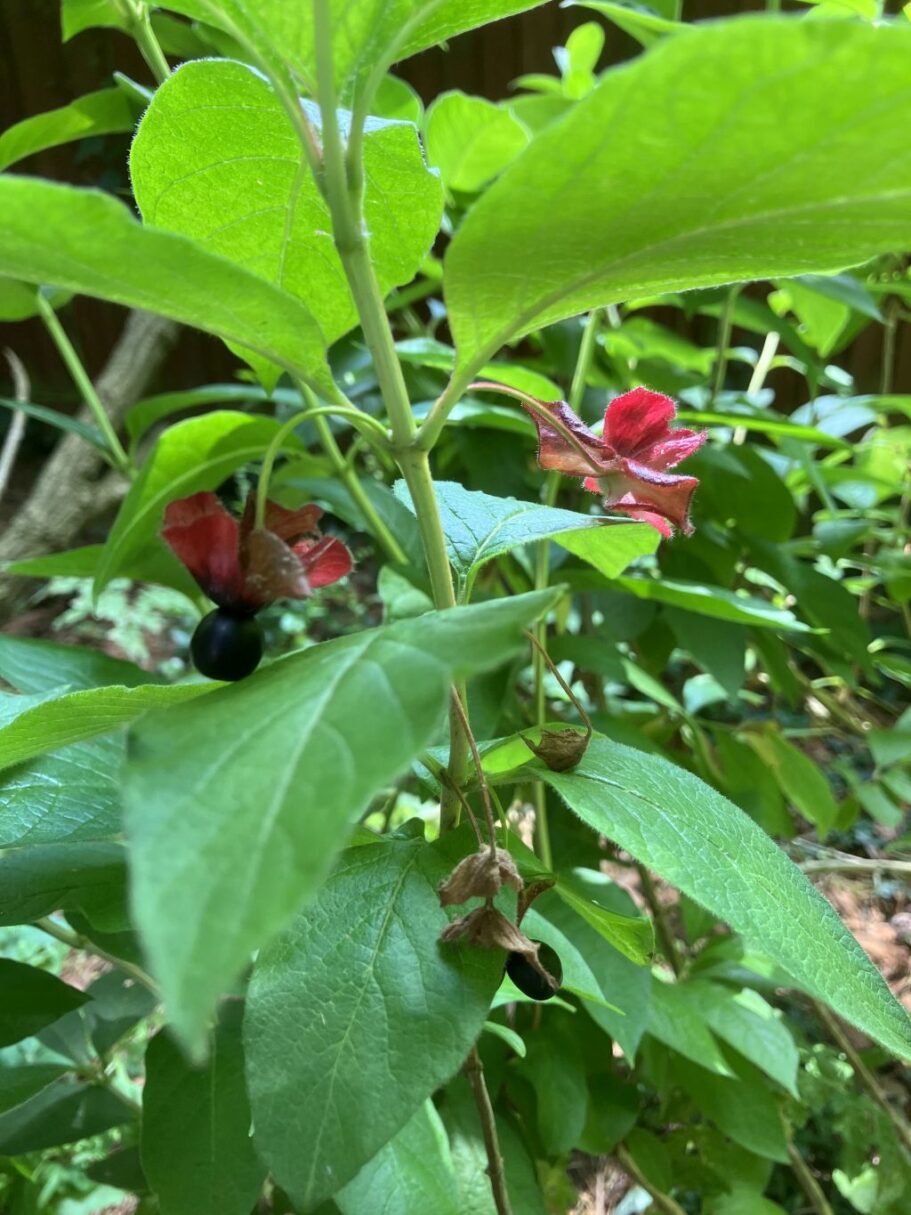#463 (Sh.R1) CALIFORNIAN HONEYSUCKLE
Lonicera involucrata var. ledebourii

Planted: 2010
This shrub is at the west end of the American section, near the Park Drive fence.
A gift of D and P Foster, National Garden Scheme visitors.
Lonicera involucrata var. ledebourii “Californian Honeysuckle” is native to coastal California and southern Oregon.
Other common names are: bearberry honeysuckle, bracted honeysuckle, twinberry honeysuckle, , twin-berry, or black twinberry. The species Lonicera involucrata is native to northern and western North America.
A large shrub that can grow 0.5 to 5 m tall with shoots with a quadrangular cross-section.
Leaves, thick and leathery, are elliptic to oval-shaped, 3 to 14 cm long and 2 to 8 cm wide; they are hairy along the margins and on the underside, and have a distinctive abrupt tip. They are of opposite arrangement.
Flowers are tinged orange to red outside 1 to 2 cm long and in pairs from leaf axils, subtended by a pair of reddish basal bracts 2 to 4 cm across.
Fruit is a black berry 6 to 12 mm wide, containing several small seeds ripening in mid-to-late summer. Berries are eaten by birds, and small mammals.
To humans the berries are inedible and poisonous.
Indigenous groups referred to them as ‘monster food’ and ‘crow berry’.
Often used as an ornamental plant.
Native American groups made use of the plant in various ways. The berries were used to make black pigment and hair dye, and the bark, berries and leaves were made into poultices and teas. The bark was used along with willow bark to weave clothing.